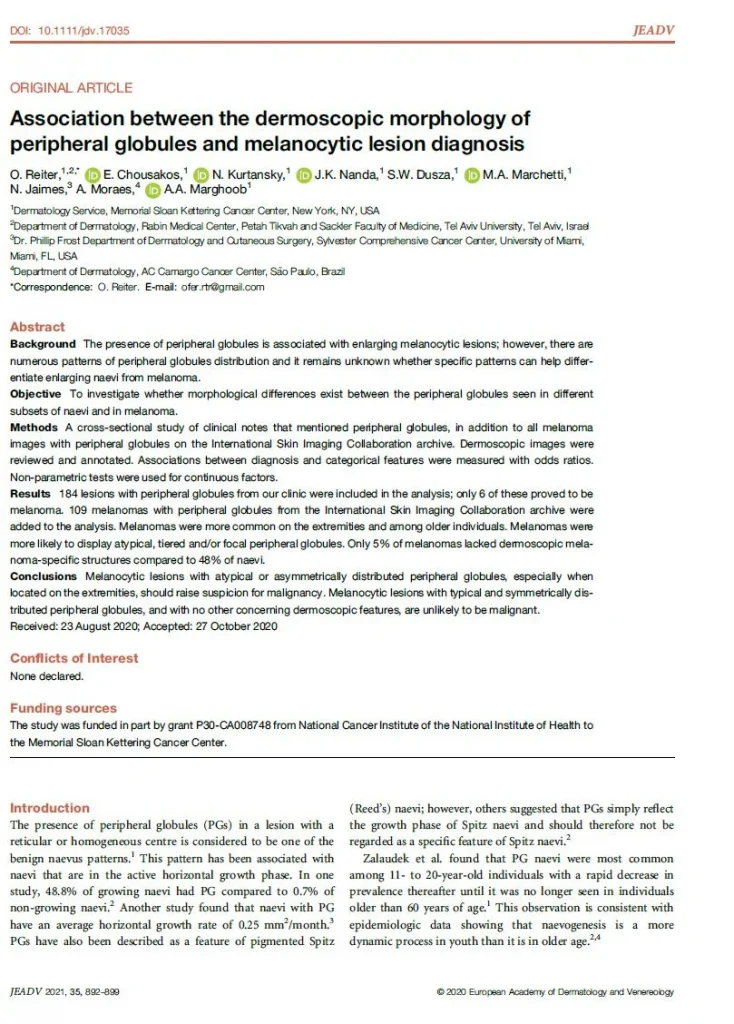O Reiter 1 2, E Chousakos 1, N Kurtansky 1, J K Nanda 1, S W Dusza 1, M A Marchetti 1, N Jaimes 3, A Moraes 4, A A Marghoob 1
Abstract
Background: The presence of peripheral globules is associated with enlarging melanocytic lesions; however, there are numerous patterns of peripheral globules distribution and it remains unknown whether specific patterns can help differentiate enlarging naevi from melanoma.
Objective: To investigate whether morphological differences exist between the peripheral globules seen in different subsets of naevi and in melanoma.
Methods: A cross-sectional study of clinical notes that mentioned peripheral globules, in addition to all melanoma images with peripheral globules on the International Skin Imaging Collaboration archive. Dermoscopic images were reviewed and annotated. Associations between diagnosis and categorical features were measured with odds ratios. Non-parametric tests were used for continuous factors.
Results: 184 lesions with peripheral globules from our clinic were included in the analysis; only 6 of these proved to be melanoma. 109 melanomas with peripheral globules from the International Skin Imaging Collaboration archive were added to the analysis. Melanomas were more common on the extremities and among older individuals. Melanomas were more likely to display atypical, tiered and/or focal peripheral globules. Only 5% of melanomas lacked dermoscopic melanoma-specific structures compared to 48% of naevi.
Conclusions: Melanocytic lesions with atypical or asymmetrically distributed peripheral globules, especially when located on the extremities, should raise suspicion for malignancy. Melanocytic lesions with typical and symmetrically distributed peripheral globules, and with no other concerning dermoscopic features, are unlikely to be malignant.


